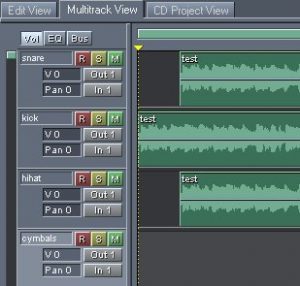Like other musicians; you can create your own demo nowadays. You can create your own home studio to start tracking, mixing and mastering projects. It saves a lot of money in the long run since you do not need to rent a studio. It also gives you more freedom to work on the project since you will be the one to handle all the music production decisions. A good rule of thumb for demo music production success is to have your demo to sound as good as possible. Assuming you already done writing a great song and already assembled a basic home recording studio; how will you start to create the demo?
STEP1: Tracking/Recording Sessions of your Demo
If you are a complete beginner or novice, take time to read the technical steps in the recording production process as well as the general music production process implemented in producing a complete recording projects. There are several techniques and skills that you should know in the tracking/recording process. When you create a demo recording of your song, you should create a multi-track recording project using multi-track software such as Cubase, Adobe audition, etc. This means each instrument will be broken down into tracks in your multi-track software, just like this one starting with the drum parts:

And then progress recording of other tracks such as vocals, guitars, bass, etc. until you have completely assembled the song in the multi-track:

Record the material as good as possible. Do not afraid to do several re-takes. Remember the “Garbage in = Garbage out” analogy is true for music production. You can never create a good mix if you do not have good recordings. Or you can never create good master if you do not have a good mix. You should take note of the following:
a.) Recording clipping prevention techniques
b.) Recording vocals
c.) Recording guitar
d.) Recording bass guitar
e.) How to record drums
f.) Best sample rate and audio bit depth for recording projects
g.) Recording vocals in mono or stereo









No responses yet